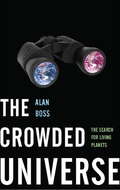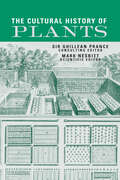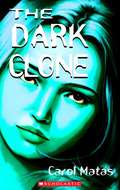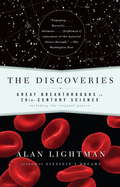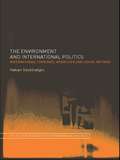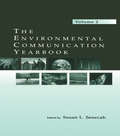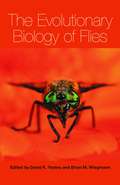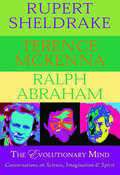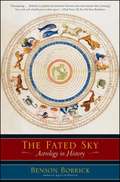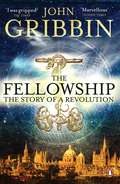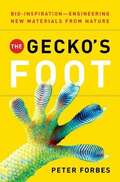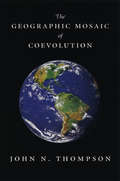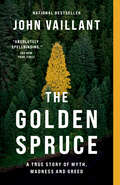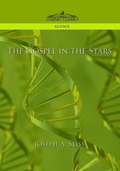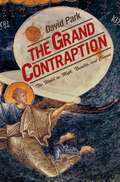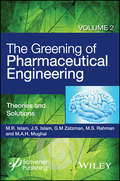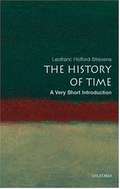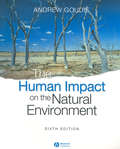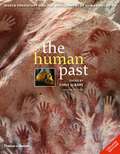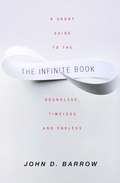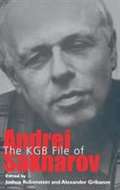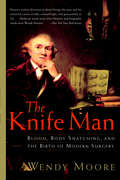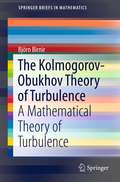- Table View
- List View
The Crowded Universe: The Search for Living Planets
by Alan BossWe are nearing a turning point in our quest for life in the universe-we now have the capacity to detect Earth-like planets around other stars. But will we find any? In The Crowded Universe, renowned astronomer Alan Boss argues that based on what we already know about planetary systems, in the coming years we will find abundant Earths, including many that are indisputably alive. Life is not only possible elsewhere in the universe, Boss argues-it is common. Boss describes how our ideas about planetary formation have changed radically in the past decade and brings readers up to date on discoveries of bizarre inhabitants of various solar systems, including our own. America must stay in this new space race, Boss contends, or risk being left out of one of the most profoundly important discoveries of all time: the first confirmed finding of extraterrestrial life.
The Cultural History of Plants
by Mark Nesbitt Ghillean PranceThis valuable reference will be useful for both scholars and general readers. It is both botanical and cultural, describing the role of plant in social life, regional customs, the arts, natural and covers all aspects of plant cultivation and migration and covers all aspects of plant cultivation and migration. The text includes an explanation of plant names and a list of general references on the history of useful plants.
The Dark Clone (Cloning Miranda #3)
by Carol MatasThe thrilling sequel to Cloning Miranda and The Second Clone. When Miranda is accused of vandalism on school property, she's confident she can clear her name - until she's shown the security tapes.
The Discoveries: Great Breakthroughs in 20th-Century Science, Including the Original Papers
by Alan LightmanAn extraordinarily accessible, illuminating chronicle of the great moments of scientific discovery in the 20th century, and an exploration into the minds of the remarkable men and women behind them. We know and read the literary masterpieces; how many of us have had the opportunity not only to read but understand the masterpieces of science that describe the very moment of discovery? The last century has seen an explosion of creativity and insight that led to breakthroughs in every field of science: from the theory of relativity to the first quantum model of the atom to the mapping of the structure of DNA, these discoveries profoundly changed how we understand the world and our place in it. Alan Lightman tells the stories of two dozen breakthroughs made by such brilliant scientists as Einstein, Bohr, McClintock and Pauling, among others, drawing on his unique background as a scientist and novelist to reveal the process of scientific discovery at its greatest. He outlines the intellectual and emotional landscape of each discovery, portrays the personalities and human drama of the scientists involved, and explains the significance and impact of the work. Finally, he gives an unprecedented and exhilarating guided tour through each of the original papers.
The Environment and International Politics: International Fisheries, Heidegger and Social Method (Environmental Politics #Vol. 10)
by Hakan SeckinelginThis new study shows how environmental issues represent a deep problem in conceptualising the relationship between human beings and nature. This key relationship grounds the implicit ethical and political concerns of International Relations and our understandings of environmental politics. It demonstrates that the core theoretical orientations of the study of International Relations are not only incapable of understanding and responding to contemporary problems, but are profoundly complicit in creating the ecological problems in the first place.This major book develops a sense of these realities based on the thinking of Martin Heidegger. It forwards new ways of rethinking the environmental questions and addresses crucial issues such as sovereignty, the International Law of The Sea, the Kyoto Protocol, Northern Alaskan oil exploration and exploitation and the impact of the United Nations Convention on the Law of The Sea III. This is essential specialist reading for readers concerned with the environment.
The Environmental Communication Yearbook: Volume 2
by Susan L. SenecahEditorial ScopeThe Environmental Communication Yearbook is a multidisciplinary forum through which a broad audience of academics, professionals, and practitioners can share and build theoretical, critical, and applied scholarship addressing environmental communication in a variety of contexts. This peer-reviewed annual publication invites submissions that showcase and/or advance our understanding of the production, reception, contexts, or processes of human communication regarding environmental issues. Theoretical expositions, literature reviews, case studies, cultural and mass media studies, best practices, and essays on emerging issues are welcome, as are both qualitative and quantitative methodologies. Areas of topical coverage will include:*participatory processes: public participation, collaborative decision making, dispute resolution, consensus building processes, regulatory negotiations, community dialogue, building civic capacity;*journalism and mass communications: newspaper, magazine, book and other forms of printed mass media; advertising and public relations; media studies; and radio, television, and Internet broadcasting; and*communication studies: rhetorical/historical case studies, organizational analyses, public relations/issues management, interpersonal/relational dimensions, risk communication, and psychological/cognitive research, all of which examine the origins, content, structure, and outcomes of discourse about environmental issues. Submissions are accepted on an ongoing basis for inclusion in volumes published annually. AudienceResearchers, scholars, students and practitioners in environmental communication, journalism, rhetoric, public relations, mass communication, risk analysis, political science, environmental education, environmental studies, public administrations; policymakers; others interested in environmental issues and the communication channels used for discourse and information dissemination on the topic.For more information and guidelines for submissions, visit www.erlbaum.com/ecy.htm.
The Evolutionary Biology of Flies
by Brian Wiegmann David K. YeatesFlies (Dipteria) have had an important role in deepening scientists'understanding of modern biology and evolution. The study of flies has figured prominently in major advances in the fields of molecular evolution, physiology, genetics, phylogenetics, and ecology over the last century. This volume, with contributions from top scientists and scholars in the field, brings together diverse aspects of research and will be essential reading for entomologists and fly researchers.
The Evolutionary Biology of Flies
by Brian Wiegmann David K. Yeates Eds.Flies (Dipteria) have had an important role in deepening scientists'understanding of modern biology and evolution. The study of flies has figured prominently in major advances in the fields of molecular evolution, physiology, genetics, phylogenetics, and ecology over the last century. This volume, with contributions from top scientists and scholars in the field, brings together diverse aspects of research and will be essential reading for entomologists and fly researchers.
The Evolutionary Mind
by Rupert Sheldrake Terence Mckenna Ralph AbrahamStimulating and often startling discussions between three friends, all highly original thinkers: Rupert Sheldrake, controversial biologist, Terence McKenna , psychedelic visionary, and Ralph Abraham , chaos mathematician. Their passion is to break out of paradigms that retard our evolution and to explore new possibilities. Through challenge and synergy they venture where few have gone before, leading their readers on an exciting journey of discovery. Their discussions focus on the evolution of the mind, the role of psychedelics, skepticism, the psychic powers of animals, the structure of time, the life of the heavens, the nature of God, and transformations of consciousness."Three fine thinkers take us plunging into the universe of chaos, mind, and spirit. Instead of leaving us lost, they bring us back with startling insights and more wonder than we knew we had." --Matthew Fox, Original Blessing and Sheer Joy"A jam-session of the mind, an intellectual movable feast, an on-going conversation that began over twenty years ago and remains as lively and relevant today as it ever was. Sadly, Terence had to leave the conversation a little earlier than planned. But the appearance of this book of trialogues at this critical, historical juncture is a reaffirmation of the potency of the optimistic vision that the trialogues express." --Dennis McKenna, brother of the late Terence McKennaRupert Sheldrake is a biologist and author of many books including The Sense of Being Stared At, And Other Aspects of the Extended Mind. Ralph Abraham is a mathematician, one of the pioneers of chaos theory and the author of several books including Chaos, Gaia, Eros: A Chaos Pioneer Uncovers the Three Great Streams of History. The late Terence McKenna was a scholar of shamanism, ethno-botanist, psychedelic researcher and author of many books including Food of the Gods and True Hallucinations.
The Fated Sky
by Benson BobrickIn a horoscope he cast in 1647 for Charles I, William Lilly, a noted English astrologer, made the following judgment: "Luna is with Antares, a violent fixed star, which is said to denote violent death, and Mars is approaching Caput Algol, which is said to denote beheading." Two years later the king's head fell on the block. "Astrology must be right," wrote the American astrologer Evangeline Adams, a claimed descendant of President John Quincy Adams, in a challenge to skeptics in 1929. "There can be no appeal from the Infinite." The Fated Sky explores both the history of astrology and the controversial subject of its influence in history. It is the first serious book to fully engage astrology in this way. Astrology is the oldest of the occult sciences. It is also the origin of science itself. Astronomy, mathematics, and other disciplines arose in part to make possible the calculations necessary in casting horoscopes. For five thousand years, from the ancient Near East to the modern world, the influence of the stars has been viewed as shaping the course and destiny of human affairs. According to recent polls, at least 30 percent of the American public believes in astrology, though, as Bobrick reveals, modern astrology is also utterly different from the doctrine of the stars that won the respect and allegiance of the greatest thinkers, scientists, and writers -- Greek, Roman, Egyptian, Arab, and Persian -- of an earlier day. Statesmen, popes, and kings once embraced it, and no less a figure than St. Thomas Aquinas, the medieval theologian, thought it not incompatible with Christian faith. There are some two hundred astrological allusions in Shakespeare's plays, and not one of their astrological predictions goes unfulfilled. The great astronomers of the scientific revolution -- Copernicus, Tycho Brahe, Kepler -- were adherents. Isaac Newton's appetite for mathematics was first whetted by an astrological text. In more recent times, prominent figures such as Churchill, de Gaulle, and Reagan have consulted astrologers and sometimes heeded their advice. Today universities as diverse as Oxford in England and the University of Zaragoza in Spain offer courses in the subject, fulfilling Carl Jung's prediction decades ago that astrology would again become the subject of serious discourse. Whether astrology actually has the powers that have been ascribed to it is, of course, open to debate. But there is no doubt that it maintains an unshakeable hold on the human mind. In The Fated Sky, Benson Bobrick has written an absolutely captivating and comprehensive account of this engrossing subject and its enduring influence on history and the history of ideas.
The Fellowship: The Story of a Revolution
by John GribbinFrom the bestselling author of Science: A History comes the enthralling story of a revolution that shook the world. Seventeenth-century England was racked by civil war, plague and fire; a world ruled by superstition and ignorance. A series of meetings of 'natural philosophers' in Oxford and London saw the beginning of a new method of thinking based on proof and experiment. John Gribbin's gripping, colourful account of this unparalleled time of discovery explores the impact of the Royal Society, culminating with Isaac Newton's revolutionary description of the universe and Edmund Halley's prediction of the return of a comet in 1759. This compelling book shows the triumph not as the work of one isolated genius, but of a Fellowship.
The Gecko's Foot: Bio-inspiration, Engineering New Materials from Nature
by Peter ForbesArising from a series of articles he wrote for The Guardian aimed at a serious-minded general audience, this book explores topics of materials science and nanotechnology, and new understandings of nature. Forbes is inspired by the subject and he draws together a significant amount of technical and scientific information.
The Geographic Mosaic of Coevolution
by John N. ThompsonCoevolution—reciprocal evolutionary change in interacting species driven by natural selection—is one of the most important ecological and genetic processes organizing the earth's biodiversity: most plants and animals require coevolved interactions with other species to survive and reproduce. The Geographic Mosaic of Coevolution analyzes how the biology of species provides the raw material for long-term coevolution, evaluates how local coadaptation forms the basic module of coevolutionary change, and explores how the coevolutionary process reshapes locally coevolving interactions across the earth's constantly changing landscapes. Picking up where his influential The Coevolutionary Process left off, John N. Thompsonsynthesizes the state of a rapidly developing science that integrates approaches from evolutionary ecology, population genetics, phylogeography, systematics, evolutionary biochemistry and physiology, and molecular biology. Using models, data, and hypotheses to develop a complete conceptual framework, Thompson also draws on examples from a wide range of taxa and environments, illustrating the expanding breadth and depth of research in coevolutionary biology.
The Golden Spruce: A True Story of Myth, Madness and Greed
by John VaillantNATIONAL BESTSELLER • WINNER OF THE GOVERNOR GENERAL'S LITERARY AWARD FOR NON-FICTION • WINNER OF THE WRITERS&’ TRUST NON-FICTION PRIZE&“Absolutely spellbinding.&” —The New York TimesThe environmental true-crime story of a glorious natural wonder, the man who destroyed it, and the fascinating, troubling context in which this act took place. FEATURING A NEW AFTERWORD BY THE AUTHOROn a winter night in 1997, a British Columbia timber scout named Grant Hadwin committed an act of shocking violence in the mythic Queen Charlotte Islands. His victim was legendary: a unique 300-year-old Sitka spruce tree, fifty metres tall and covered with luminous golden needles. In a bizarre environmental protest, Hadwin attacked the tree with a chainsaw. Two days later, it fell, horrifying an entire community. Not only was the golden spruce a scientific marvel and a tourist attraction, it was sacred to the Haida people and beloved by local loggers. Shortly after confessing to the crime, Hadwin disappeared under suspicious circumstances and is missing to this day. As John Vaillant deftly braids together the strands of this thrilling mystery, he brings to life the ancient beauty of the coastal wilderness, the historical collision of Europeans and the Haida, and the harrowing world of logging—the most dangerous land-based job in North America.
The Gospel in the Stars
by Joseph A. SeissFirst published in 1882, this book explains how God arranged the stars in the sky to spell out his ultimate plans for the human race.
The Grand Contraption: The World as Myth, Number, and Chance
by David ParkThe Grand Contraption tells the story of humanity's attempts through 4,000 years of written history to make sense of the world in its cosmic totality, to understand its physical nature, and to know its real and imagined inhabitants. No other book has provided as coherent, compelling, and learned a narrative on this subject of subjects. David Park takes us on an incredible journey that illuminates the multitude of elaborate "contraptions" by which humans in the Western world have imagined the earth they inhabit--and what lies beyond. Intertwining history, religion, philosophy, literature, and the physical sciences, this eminently readable book is, ultimately, about the "grand contraption" we've constructed through the ages in an effort to understand and identify with the universe. According to Park, people long ago conceived of our world as a great rock slab inhabited by gods, devils, and people and crowned by stars. Thinkers imagined ether to fill the empty space, and in the comforting certainty of celestial movement they discerned numbers, and in numbers, order. Separate sections of the book tell the fascinating stories of measuring and mapping the Earth and Heavens, and later, the scientific exploration of the universe. The journey reveals many common threads stretching from ancient Mesopotamians and Greeks to peoples of today. For example, humans have tended to imagine Earth and Sky as living creatures. Not true, say science-savvy moderns. But truth isn't always the point. The point, says Park, is that Earth is indeed the fragile bubble we surmise, and we must treat it with the reverence it deserves.
The Greening of Pharmaceutical Engineering, Theories and Solutions
by Gary M. Zatzman Jaan S. Islam M. R. Islam M. A. Mughal M. Safiur RahmanThis is the second volume in a four-volume series aimed at guiding the pharmaceutical industry toward sustainability. After analyzing and exposing some of the backward and ill-conceived notions that guide the present state of the industry, this volume presents key theories and new, groundbreaking solutions for re-thinking the processes involved in the engineering of pharmaceuticals and offers a fundamental paradigm shift.The 4 volumes in this ambitious project are: * Volume 1: Practice, Analysis, and Methodology * Volume 2: Theories and Solutions * Volume 3: Applications for Mental Disorder Treatments * Volume 4: Applications for Physical Disorder TreatmentsThis ground-breaking set of books is a unique and state-of-the-art study that only appears here, within these pages. A fascinating study for the engineer, scientist, and pharmacist working in the pharmaceutical industry and interested in sustainability, it is also a valuable textbook for students and faculty studying these subjects.
The History of Time: A Very Short Introduction
by Leofranc Holford-StrevensWhy do we measure time in the way that we do? Why is a week seven days long? At what point did minutes and seconds come into being? Why are some calendars lunar and some solar? The organisation of time into hours, days, months and years seems immutable and universal, but is actually far more artificial than most people realise. The French Revolution resulted in a restructuring of the French calendar, and the Soviet Union experimented with five and then six-day weeks. Leofranc Holford-Strevens explores these questions using a range of fascinating examples from Ancient Rome and Julius Caesar's imposition of the Leap Year, to the 1920s' project for a fixed Easter.
The Human Body in Health & Disease
by Gary A. Thibodeau Kevin T. PattonOffering a student-friendly writing style, this text presents a body systems approach with a strong emphasis on vocabulary and basic anatomy and physiology concepts, as well as the basic mechanisms of disease and pathologic conditions associated with each body system. This comprehensive text is dominated by two unifying themes: the complementarity of structure and function and homeostasis. The integrating principle of homeostasis is used to show how normal structure and function is achieved and maintained. Failures of homeostasis are shown as basic mechanisms of disease. The reader is drawn into the subject by superior illustrations, including cadaver dissections, and other student-friendly features. Boxed Essays throughout each chapter contain information ranging from clinical applications to sidelights on recent research or topics related to exercise and fitness. Clinical Applications at the end of each chapter offer short case studies with questions that tie theory to practice, and encourage students to apply their knowledge to specific, practical problems. Answers are in the back of the book. Readability and coverage are at the appropriate level for students approaching the study of anatomy and physiology for the first time, with interesting analogies and examples along with the factual information. Superior art program, with over 450 full-color illustrations, complements text material. Chapter Outlines introduce each chapter and preview the content. Objectives contain measurable objectives for students to identify key goals and master information. Detailed Outline Summaries at the end of each chapter provide an excellent recap of important chapter content. New and important vocabulary terms are listed at the end of each chapter, and a comprehensive Glossary provides the full definition for each term. All vocabulary terms in each chapter are provided in bold print. Student self-evaluation activities at the end of each chapter measure their mastery of content. The Chapter Test (answers in back of book), Review Questions and Critical Thinking (answers in Instructors Manual) provide objective and subjective questions and encourage use of critical thinking skills. Pathologic Conditions appendix provides tables summarizing specific pathological conditions by characteristic. Medical Terminology appendix provides a list of word parts commonly used in terms related to medicine and pathology, along with tips on dissecting complex terms to determine their meanings. Clinical Laboratory Values appendix provides commonly observed values for human body content and physiological conditions, along with their normal ranges. New Chemistry of Life chapter discusses basic chemistry concepts needed for understanding basic anatomy and physiology. The Panorama of Anatomy and Physiology/Body Spectrum: Mosbys Electronic Anatomy Coloring Book are included in each textbook. A two-in-one CD-ROM featuring two of popular interactive programs, it simplifies the way students learn anatomy and medical terminology by offering 80 detailed anatomy illustrations that can be colored online or printed out to color and study offline. It also features quizzes, movie clips, fun facts, and information on careers in the field of A&P. New Science Applications boxes are added to each chapter, highlighting the contributions of trailblazing scientists to the field of anatomy and physiology. Study Tips with collaborative learning activities are now listed at the end of each chapter to assist students in how best to study the chapter materials, making this text more student friendly than ever before. New Evolve website provides students access to web links created especially for this text along with online study activities and study tips. It also includes continually updated content, study through the Internet, and
The Human Impact on the Natural Environment: Past, Present, and Future
by Andrew S. GoudieThe new edition of this classic student text provides an up-to-date and comprehensive view of the major environmental issues facing the world today, and is an essential introduction to the past, present and future impact of humans on Earth. Explores the impact of humans upon vegetation, animals, soils, water, landforms, and the atmosphere. Updated extensively, with many new figures and up-to-date statistics. Four completely new chapters explore the ways in which global climate change may have an impact on Earth in the future. A new design makes the text even more accessible and easy to use. Visit www.blackwellpublishing.com/humanimpact to access the artwork from the book.
The Human Past: World Prehistory and the Development of Human Societies
by Chris ScarreTextbook on humans, from 6 million years ago to early civilizations.
The Infinite Book: A Short Guide to the Boundless, Timeless and Endless
by John D. BarrowAn examination of Infinity — in history and science — with excursions into literature, philosophy and religion, written by one of the most successful writers of popular science. Infinity is surely the strangest idea that humans have ever thought. Where did it come from and what is it telling us about our Universe? Can there actually be infinities? Or is infinity just a label for something that is never reached, no matter how long you go on counting? Can you do an infinite number of things in a finite amount of time? Is the universe infinite? But infinity is also the place where things happen that don’t. All manner of strange paradoxes and fantasies characterize an infinite universe. So what is it like to live in a Universe where nothing is original, where you can live forever, where anything that can be done, is done, over and over again? These are some of the deep questions that the idea of the Infinite pushes us to ask. Throughout history, the Infinite has been a dangerous idea. Many have lost their lives, their careers, or their freedom for talking about it. The Infinite Bookwill take you on a tour of these dangerous questions and the strange answers that scientists, mathematicians, philosophers, and theologians have come up with to deal with its threats to our sanity.
The KGB File of Andrei Sakharov
by Joshua Rubenstein Alexander Gribanov Ella Shmulevich Efrem Yankelevich Alla ZeideAndrei Sakharov (1921-1989), a brilliant physicist and the principal designer of the Soviet hydrogen bomb, later became a human rights activist and--as a result--a source of profound irritation to the Kremlin. This book publishes for the first time ever KGB files on Sakharov that became available during Boris Yeltsin's presidency. The documents reveal the untold story of KGB surveillance of Sakharov from 1968 until his death in 1989 and of the regime's efforts to intimidate and silence him. The disturbing archival materials show the KGB to have had a profound lack of understanding of the spiritual and moral nature of the human rights movement and of Sakharov's role as one of its leading figures.
The Knife Man: Blood, Body Snatching, and the Birth of Modern Surgery
by Wendy MooreThe vivid, often gruesome portrait of the 18th century pioneering surgeon and father of modern medicine, John Hunter. In the gothic horror story, Dr Jekyll and Mr Hyde, the house of the genial doctor turned fiend is reputedly based on the home of the 18th century surgeon and anatomist John Hunter. The choice was understandable, for Hunter combined an altruistic determination to advance scientific knowledge with dark dealings that brought him into daily contact with the sinister Georgian underworld. In 18th century London, Hunter was a man both acclaimed and feared. John Hunter revolutionized surgical practice through his groundbreaking experiments. Driven by an insatiable curiosity, he dissected thousands of human bodies, using the knowledge he gained to improve medical care for countless patients, including some very illustrious people, Joshua Reynolds and Lord Byron among them. He was appointed Surgeon Extraordinary to King George III. InThe Knife Man, Wendy Moore unveils a world characterized by hangings at the Tyburn Tree, by gruesome expeditions to dank churchyards, and by countless human dissections in attic rooms — large sums were paid to body-snatchers for stolen corpses which were delivered to his back door. Meticulously researched,The Knife Manis a fascinating portrait of a scientist determined to haul surgery out of the realm of superstition and into the dawn of modern medicine.
The Kolmogorov-Obukhov Theory of Turbulence
by Bjorn BirnirTurbulence is a major problem facing modern societies. It makes airline passengers return to their seats and fasten their seatbelts but it also creates drag on the aircraft that causes it to use more fuel and create more pollution. The same applies to cars, ships and the space shuttle. The mathematical theory of turbulence has been an unsolved problems for 500 years and the development of the statistical theory of the Navier-Stokes equations describes turbulent flow has been an open problem. The Kolmogorov-Obukhov Theory of Turbulence develops a statistical theory of turbulence from the stochastic Navier-Stokes equation and the physical theory, that was proposed by Kolmogorov and Obukhov in 1941. The statistical theory of turbulence shows that the noise in developed turbulence is a general form which can be used to present a mathematical model for the stochastic Navier-Stokes equation. The statistical theory of the stochastic Navier-Stokes equation is developed in a pedagogical manner and shown to imply the Kolmogorov-Obukhov statistical theory. This book looks at a new mathematical theory in turbulence which may lead to many new developments in vorticity and Lagrangian turbulence. But even more importantly it may produce a systematic way of improving direct Navier-Stokes simulations and lead to a major jump in the technology both preventing and utilizing turbulence.
